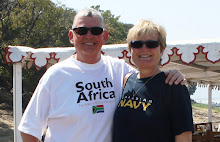 Forget about that high stakes poker game. Sadly, there is no Casino Royale in Montenegro as M intimated to Bond in a recent 007 movie.
Forget about that high stakes poker game. Sadly, there is no Casino Royale in Montenegro as M intimated to Bond in a recent 007 movie. There are however a lot of surprises when you are formally introduced to Kotor’s old town, a UNESCO World Heritage site, as well as the scenery beyond it.
The old medieval town of Kotor, a maze of winding cobbled streets, is encased within well preserved walls built in the 9th century. The walls meander up the side of a steep mountain to a fortress high on the hillside.

Things didn’t get off to the best start that morning as the ship approached Kotor. Eating breakfast on the Terrace patio at the aft of the ship, the raindrops quickly turned to a raging torrent with the clouds sinking over the mountaintops and the wind whipping up white caps on the inlet, the southernmost fiord in Europe.
Prepared for the deluge we stepped ashore with umbrellas and rain gear to begin our drive along the old road to Cetinje.
 As the old road snaked its way up the mountainside we realized it was going to be a drive of extreme hairpin bends with sheer drops and few barriers. Undoubtedly we had a good driver but there were a few moments when I truly wondered if this was going to be it.
As the old road snaked its way up the mountainside we realized it was going to be a drive of extreme hairpin bends with sheer drops and few barriers. Undoubtedly we had a good driver but there were a few moments when I truly wondered if this was going to be it. 
Seated on animal skins in a rustic cabin looking out on the colours of autumn, we did wonder why were eating (and drinking) so soon after breakfast.
As we travelled on the other side of the mountain the beaches of the Budva Riviera came into view. Popular with Europeans and Russians it has become a high-priced summer resort where apparently the Serbian jet set come to be seen. At this time of the year it was quiet as the local residents prepared for winter with the town their own.
 Things have changed since the breakup of Yugoslavia with three quarters of the old stone buildings of beautiful Kotor purchased by foreigners. In spite of all this I am still troubled by the fact that there is no Casino Royale in Montenegro.
Things have changed since the breakup of Yugoslavia with three quarters of the old stone buildings of beautiful Kotor purchased by foreigners. In spite of all this I am still troubled by the fact that there is no Casino Royale in Montenegro.

No comments:
Post a Comment